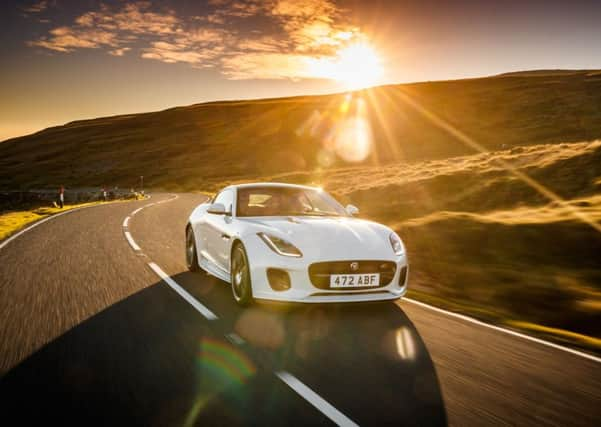Review: Jaguar F-Type


Diesel fuel is still popular in SUVs for obvious reasons: fuel economy and towing heavy loads. Across the Jaguar Land Rover catalogue it still stands at 78 per cent, down from 90 per cent in the fuel’s peak. Hybrid electric/petrol engines are on the way and the all-electric, all-wonderful I-Pace gave the marque its first European Car of the Year title in March – an award usually given to “cheaper” vehicles. It also collected awards from the UK and Scottish COTY panels of motoring media.
Over at Land Rover there is an all-new Evoque, replacing a model which won more than 200 UK and international awards in its eight years. The new Defender, a most anticipated model, will be here. Dealers and others have had previews – apparently with mobile phones/cameras confiscated. Meanwhile, the Highways Agency has bought 70 Discovery models. One senses a public rejection of the frumpy rear with its silly offset number plate but there’s no denying its practicality and ability on and off road.
Advertisement
Hide AdAdvertisement
Hide AdAluminium is widely used – ever since the 1948 Land-Rover. Recycling is employed and since 2014 the XE saloon has used as much as 75 per cent recycled aluminium in its body panels. JLR uses 180,000 tons of it a year. The light metal is easily recycled and 75 per cent produced globally is still in circulation, says JLR. Its “closed loop” system reduces both production of CO2 and the use of new aluminium. The recycled aluminium is tested for strength and graded at Brunel University.
Jaguar’s F-Type two-seater roadster and coupe have been with us since 2013. They are made from aluminium. The 2019 range uses four-cylinder V6 and V8 engines with power ranging from 296bhp to 567bhp. Prices start at £50,525 for the coupe and £56,005 for the soft-top.
Tested here is the two-litre, turbocharged four-cylinder coupe with an eight-speed automatic gearbox and 296 brake horse power in R-Dynamic trim. Its price: £55,625. An F-Type is well-detailed in its “base” form. Pop out door handles, pop up vents on the fascia, pop up rear spoiler – showing the silver cat badge in the mirror are some of the talking points in The Camshaft Arms snug.
You get a rear camera (hard not to want on every car). You have navigation, a Meridian audio system, leather and suedette seats, 18-inch alloys. The R-Dynamic adds a switchable sports exhaust, with a selectable loud setting, a cosmetic gloss black “design pack”, LED headlamps, an aluminium console, bespoke door tread plates, passive (ie fixed rate) suspension, an open (ie not a limited slip) rear differential with torque vectoring for more effective traction when cornering and 19-inch silver alloys.
The car’s wow factor still causes intense interest six years after its debut: “how does someone afford a car like that?” and “that’s a beautiful car” were a couple of comments from strangers.
Roadster or Coupe? Both look excellent. The open car has the obvious fresh-air appeal but it costs much more and luggage space is thin. The coupe’s lift-back tailgate gives practicality and much better luggage capacity. Both cars are low-slung, so avoid if you are bothered by aches and pains or lack of mobility. There’s a saying that when you can afford to buy a sports car you may be too old to enjoy it.
Jaguar’s figures for the 2-litre Coupe are a 0-60mph time of 5.4 seconds and a maximum of 155mph so it’s a debate why you would want a faster, more expensive model. The eco ratings are 179g of CO2 and around 31mpg under the latest real-world tests. In my real-life use it ranged from 26mpg in town, to 30mpg on a mixed-route, 40-mile commute, to 38mpg on the motorway – according to the on-board tripmeter.
I spent a week with the car and wanted more. It is exciting, practical, modest or intrusive, to suit you really. The four-cylinder engine rorts like a V6, with a hearty thrum when you start it up.
Advertisement
Hide AdAdvertisement
Hide AdYou may also be looking at Porsche 911 (with the advantage of rear seats) or a Porsche Boxster. Audi’s TT is a cheaper alternative and has rear seats of sorts. Ford’s Mustang is another great choice. I could live with any of them but at £50,000 the F-Type coupe is a compelling beauty at a tempting price. It is also made in Britain – something to be proud of.
Verdict:Practical performance tourer.